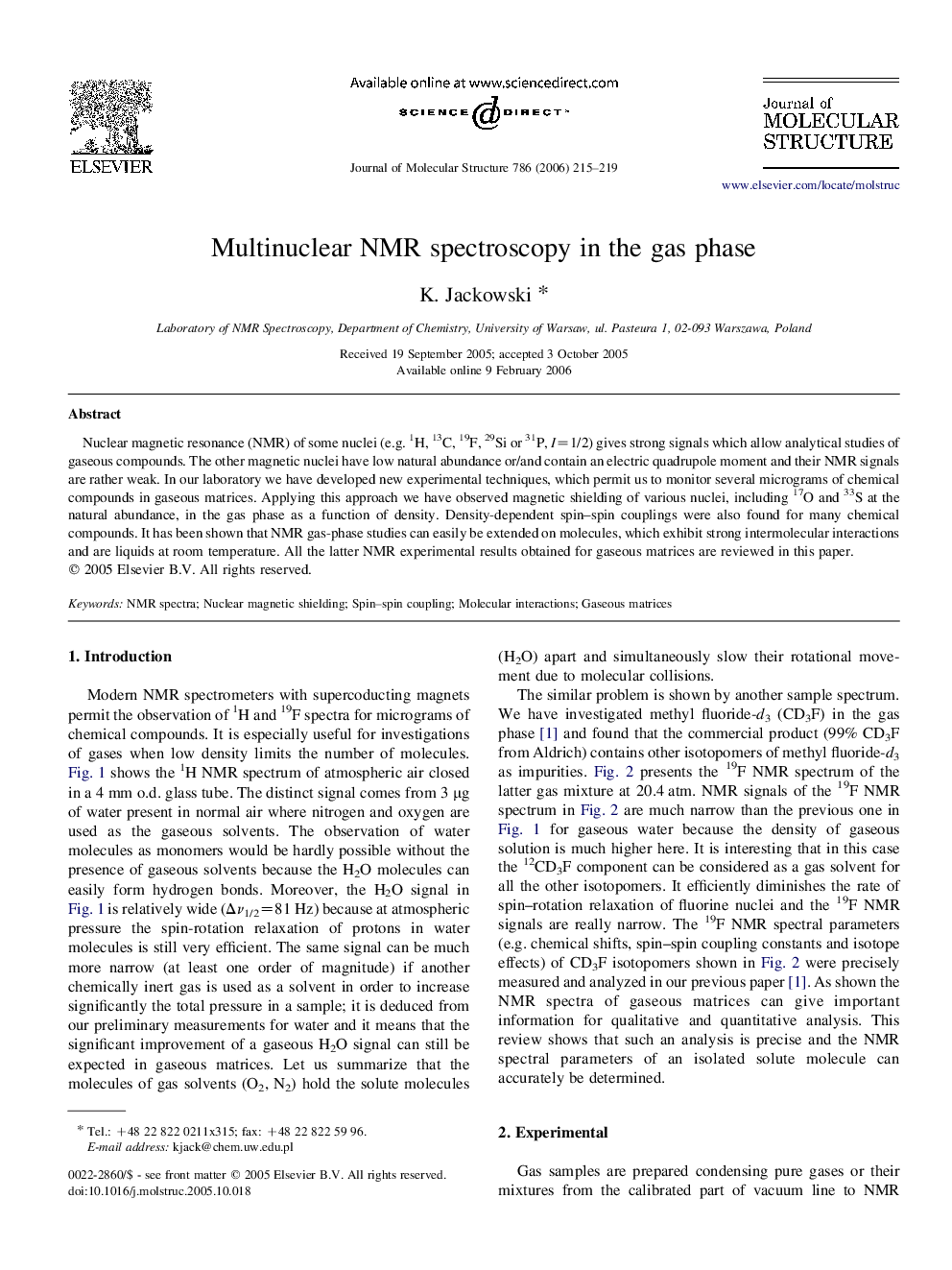| Article ID | Journal | Published Year | Pages | File Type |
|---|---|---|---|---|
| 1408112 | Journal of Molecular Structure | 2006 | 5 Pages |
Nuclear magnetic resonance (NMR) of some nuclei (e.g. 1H, 13C, 19F, 29Si or 31P, I=1/2) gives strong signals which allow analytical studies of gaseous compounds. The other magnetic nuclei have low natural abundance or/and contain an electric quadrupole moment and their NMR signals are rather weak. In our laboratory we have developed new experimental techniques, which permit us to monitor several micrograms of chemical compounds in gaseous matrices. Applying this approach we have observed magnetic shielding of various nuclei, including 17O and 33S at the natural abundance, in the gas phase as a function of density. Density-dependent spin–spin couplings were also found for many chemical compounds. It has been shown that NMR gas-phase studies can easily be extended on molecules, which exhibit strong intermolecular interactions and are liquids at room temperature. All the latter NMR experimental results obtained for gaseous matrices are reviewed in this paper.
